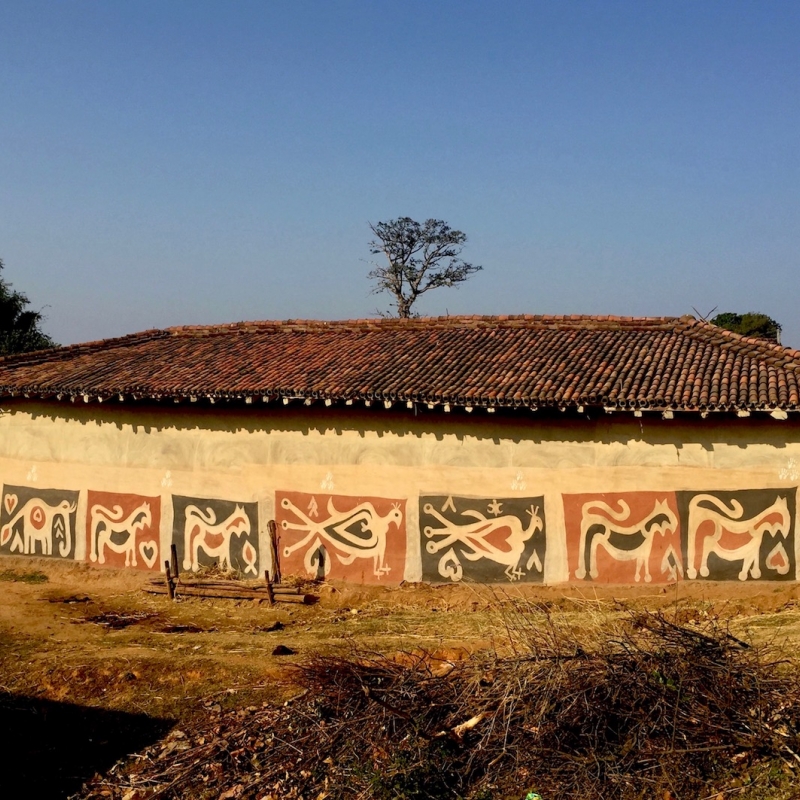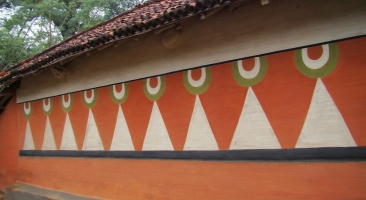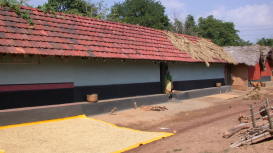Considering that adivasi architecture and domestic art in India have been recognised in scholarship since colonial times, one finds surprisingly little material on the subject beyond famous traditions such as Warli, Gond or Mithila art. Even when such documentation exists, the location of these art practices within the domestic sphere and the everyday lives of the women artists is missing or muted in discussion. This project collates a visual archive of domestic mural traditions in Jharkhand, together with a documentation of its production. The visuals covering the north and south of Jharkhand present a range of designs, differences in design developments and narratives of the process of painting. The photographs are accompanied by three essays providing an overview of the mural traditions, details of how they are made, and insights into the work of Mr. Bulu Imam, who has spent his life working in the field of adivasi art. The module attempts to not just exhibit the forms of mural art, but also locate it within the context of everyday life and domesticity as the critical meshwork within which the art is produced and therefore must be viewed.

Gauri Bharat
Gauri Bharat is Chair of Architectural History and Theory Program at the Faculty of Architecture, CEPT University, Ahmedabad, India. Her teaching and research focus primarily on how people engage with the built environment. She explored this in her PhD, which analysed Adivasi built environments as an archive of their history. The project not only demonstrated what architectural change can tell us about the social, environmental and historical lives of such communities, but also reflected on the role of research and history in shaping personal and collective identities. Additionally, for the past few years now, Gauri has been fascinated by the oddities and untold stories of Indian cities. She has experimented with teaching architectural history, theory and humanities using the city of Ahmedabad as a laboratory. Her students have mapped cows, roadside shrines, fruit and vegetable markets, temporary markets, and roadside eating habits, among other things. By immersing themselves in the seemingly mundane but actually complex urban phenomena, her students learn to make sense of built environments as both sites and processes. Gauri continues to do research in the ways in which people produce, inhabit and transform built environments, be it the street culture of Ahmedabad or in the rural areas of Jharkhand.


